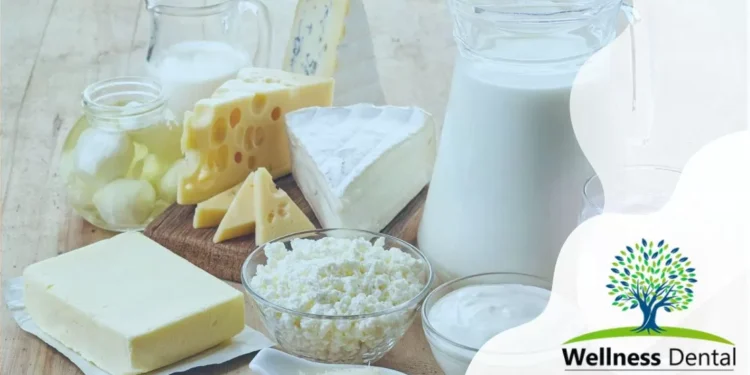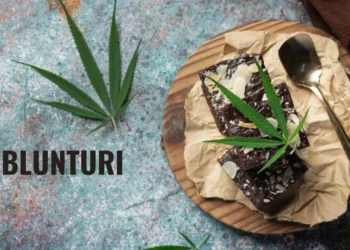Introduction
Embarking on the journey of post-tooth extraction recovery can be both challenging and crucial for a swift healing process. Among the various considerations, the role of dairy products stands out as a significant factor. In this article, we aim to shed light on the importance of incorporating dairy into your post-extraction diet, exploring its benefits, types, potential risks, and expert opinions. Let’s delve into the world of dairy and its impact on the recovery journey.
Importance of Dairy
Dairy products are not just a tasty addition to your meals; they play a vital role in promoting post-tooth extraction recovery. The nutrients present in dairy, especially calcium and protein, contribute significantly to the healing process.
Benefits of Dairy for Post-Tooth Extraction Recovery
Calcium for Bone Regeneration: The most notable benefit of dairy is its rich calcium content. Calcium is essential for bone health and aids in the regeneration of the jawbone around the extraction site. This promotes a robust foundation for the healing process.
Protein for Tissue Repair: Protein is another crucial component found in dairy products. It plays a pivotal role in tissue repair, ensuring a faster recovery by supporting the rebuilding of damaged tissues around the extraction area.
Vitamins for Overall Immune Function: Dairy is also a source of various vitamins, including vitamin D. These vitamins contribute to overall immune function, enhancing the body’s ability to ward off infections and promoting a more robust recovery.
Types of Dairy Products
Not all dairy products are created equal, especially when it comes to post-tooth extraction recovery. Choosing the right types of dairy is essential to ensure both nutritional value and ease of consumption during this sensitive period.
Varieties Suitable for Consumption After Extraction
Yogurt: Opt for plain, soft yogurt as it is not only rich in calcium and protein but also easy to consume. The smooth texture minimizes the risk of irritation to the extraction site.
Milkshakes: Blending milk with fruits or other soft ingredients can create a delicious and nutritious shake. This provides a convenient way to incorporate dairy into your diet without compromising on flavor.
Soft Cheeses: Select soft cheeses like ricotta or cream cheese, as they are easier to chew and gentler on the healing area. These cheeses can be spread on soft bread or crackers for a satisfying and nutritious snack.
Timing Matters
While the type of dairy is crucial, the timing of consumption can significantly impact its effectiveness in the recovery process. Understanding the ideal timings ensures a consistent supply of nutrients throughout the day.
Ideal Timings for Consuming Dairy Post-Extraction
During Meals: Incorporating dairy into your main meals ensures a steady intake of nutrients alongside other essential food groups. This helps maintain a balanced diet during the recovery period.
As Snacks Between Meals: Consuming dairy as snacks between meals can provide an additional boost of nutrients. Opt for easily digestible options like yogurt or a small glass of milk for a convenient and nourishing snack.
Avoiding Late-Night Consumption: While dairy is beneficial, it’s advisable to avoid consuming it right before bedtime to prevent potential discomfort. Optimal digestion occurs when dairy is consumed earlier in the day.
Potential Risks
Despite the numerous benefits, it’s crucial to be aware of potential risks associated with dairy consumption after tooth extraction. Being informed allows individuals to make choices that align with their specific needs and health conditions.
Considerations and Risks Associated with Dairy
Lactose Intolerance or Allergies: Some individuals may experience lactose intolerance or allergies to dairy products. It’s essential to be aware of any pre-existing conditions and opt for lactose-free alternatives if necessary.
Excessive Consumption: While dairy is beneficial, excessive intake can lead to complications such as digestive discomfort. Moderation is key to reaping the benefits without overwhelming the digestive system.
Consulting with a Healthcare Professional: Individuals with specific health concerns or conditions should consult with their healthcare provider before incorporating dairy into their post-tooth extraction diet.
Nutritional Value
Understanding the nutritional value of dairy products provides insights into how they contribute to the post-tooth extraction recovery process. Let’s delve into the key nutrients and their roles in supporting healing and recovery.
Nutrients in Dairy Aiding in Healing and Recovery
Calcium for Bone Health: As mentioned earlier, calcium is crucial for bone regeneration. It not only supports the healing of the extraction site but also contributes to overall oral health.
Protein for Tissue Repair: Protein plays a central role in tissue repair, promoting the regeneration of soft tissues around the extraction area. This is essential for a faster and more efficient recovery.
Vitamins for Immune Support: The vitamins present in dairy, including vitamin D, contribute to overall immune function. A robust immune system is essential for preventing infections that may hinder the recovery process.
Alternatives
For individuals with dairy restrictions or preferences, exploring non-dairy alternatives ensures a diverse and inclusive approach to post-tooth extraction nutrition. These alternatives provide similar nutritional benefits without relying on traditional dairy.
Non-Dairy Options for Those with Dairy Restrictions
Soy Products: Soy milk and soy-based products are rich in nutrients and serve as excellent alternatives to traditional dairy. They provide a comparable source of protein and calcium.
Almond Milk: Almond milk is a popular non-dairy option that is often fortified with essential nutrients. It offers a pleasant flavor and can be easily incorporated into various recipes.
Fortified Non-Dairy Alternatives: Many non-dairy alternatives, such as oat milk or coconut milk, are fortified with vitamins and minerals. Checking labels for added nutrients ensures that these alternatives contribute to post-tooth extraction recovery.
Hygiene Practices
Maintaining optimal oral hygiene during the recovery period is paramount to prevent complications and support the healing process. Proper hygiene practices contribute to a clean and healthy environment, reducing the risk of infections.
Importance of Maintaining Oral Hygiene During Recovery
Gentle Brushing: Use a soft-bristled toothbrush to gently brush your teeth, avoiding the extraction site. Gentle brushing promotes cleanliness without causing unnecessary irritation.
Non-Alcoholic Mouthwash: Incorporating a non-alcoholic mouthwash into your oral care routine helps to rinse away bacteria without causing discomfort or stinging sensations.
Avoiding Hard or Sticky Foods: During the recovery period, it’s advisable to avoid hard or sticky foods that may pose a risk to the extraction site. Opt for softer options to prevent potential complications.
Recipes
Incorporating dairy into your post-tooth extraction diet doesn’t have to be mundane. Here are some easy-to-make recipes that prioritize both nutrition and ease of consumption, ensuring a delicious and enjoyable recovery.
Soft Dairy Recipes for Post-Extraction Meals
Creamy Yogurt Smoothie: Blend plain yogurt with soft fruits like banana or berries for a creamy and nutrient-packed smoothie. This provides a refreshing and easy-to-consume option.
Cheese and Vegetable Omelet: Soft cheeses like feta or goat cheese can be incorporated into a fluffy omelet with soft-cooked vegetables. This savory option adds variety to your post-extraction meals.
Mashed Avocado and Cheese Wrap: Mash avocado and spread it on a soft tortilla, adding a layer of soft cheese. Roll it up for a tasty and nutritious wrap that’s gentle on the healing area.
Patient Experiences
Real stories from individuals who have successfully incorporated dairy into their post-tooth extraction recovery provide valuable insights and motivation. These testimonials offer a personal perspective on the challenges and triumphs of navigating this phase.
Testimonials, Success Stories with Dairy
Overcoming Initial Apprehensions: Many individuals share their initial concerns about incorporating dairy, highlighting how gradual inclusion and experimentation led to positive outcomes.
Improved Healing Journey: Success stories often emphasize the role of dairy in promoting a smoother healing process. Individuals recount noticeable improvements in recovery when dairy became a consistent part of their post-extraction diet.
Tips for Seamless Integration: Testimonials often include practical tips on how to seamlessly integrate dairy into the recovery journey, addressing concerns and offering actionable advice for others.
Expert Opinions
Seeking insights from dental professionals adds a layer of credibility to the benefits discussed earlier. Let’s explore what dentists have to say about the role of dairy in post-tooth extraction recovery.
Dentists’ Opinions, Dental Recommendations
Emphasis on Tailored Nutrition Plans: Dental professionals stress the importance of personalized nutrition plans after tooth extraction. They often recommend including dairy for its proven benefits in promoting healing.
Acknowledgment of Nutritional Significance: Dentists acknowledge the nutritional significance of dairy in supporting the body’s natural healing processes. Their recommendations align with the broader consensus within the dental community.
Addressing Patient Concerns: Expert opinions often address common concerns patients may have about incorporating dairy, providing reassurance and specific guidance based on individual cases.
Common Myths
Dispelling misconceptions around dairy and tooth extraction is crucial for making informed decisions about post-surgery nutrition. Let’s tackle some common myths to foster a more accurate understanding.
Dental Misconceptions, Debunking Myths
Myth: Dairy Delays Healing: Addressing the misconception that dairy might delay the healing process, evidence suggests that when consumed in moderation, dairy contributes to, rather than hinders, post-tooth extraction recovery.
Myth: Lactose-Free Means Nutrient-Free: Debunking the notion that lactose-free dairy options lack essential nutrients. Many lactose-free alternatives are fortified, ensuring they remain a valuable source of key nutrients.
Navigating Dietary Choices: Exploring how individuals can navigate their dietary choices based on accurate information helps dispel myths and empowers them to make choices aligned with their recovery goals.
Conclusion
In conclusion, dairy products play a pivotal role in post-tooth extraction recovery, offering a wealth of nutrients crucial for healing. By understanding the benefits, risks, and alternatives, individuals can make informed decisions about incorporating dairy into their recovery diet. Remember to consult with your dentist for personalized advice based on your specific case. Here’s to a swift and nourishing recovery journey!















